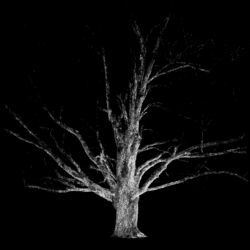Two recent cases will be of interest to charities.
Centenary Hospital Association
In an application by Centenary Hospital Association (the “Hospital”) to the Supreme Court of Ontario, heard: May 23, 24 and 25, 1989 (unreported), Osler J. considered issues involving charities and business.
While this was not a tax case, it will be of interest to the charitable community because it concerns the ongoing debate surrounding charities which engage in business. The question of whether, and to what extent, charities may carry on business activities is always a worry to the charitable community because under both the common law and the income tax rules applicable to charities, charities must devote their resources exclusively to charitable activities and at the same time conduct their primary business which is providing charitable services.
The question at issue in the Centenary Hospital Association case was whether or not the Public Trustee of Ontario has a role in supervising the use of lands and funds of public hospitals which are generally under the control of the Minister of Health and governed by the Public Hospitals Act. The Court held that he did not.
In 1981 the Ontario Government through its BOND Programme provided incentives to hospitals to raise greater revenue by introducing or expanding existing patient-care-related services from which the hospital would derive and retain revenue. As a consequence of these and other planning and development considerations, the Hospital embarked on plans to develop a medical arts centre with a health-related retail base that would be rented and generate income. The Public Trustee of Ontario would not give assurance that he would not object to the proposed development and the parties went to court.
Osler J. held that the activities of the Hospital were solely governed by the Public Hospitals Act and that the Public Trustee had no power to supervise such activities under the Charities Accounting Act.
Osler J. also considered whether the Charitable Gifts Act would apply and preclude the Hospital from carrying on such activities. He concluded that it did not. In reaching this conclusion, he noted that Revenue Canada had issued a ruling that the proposed activity would not, in fact, be a business, but rather would be an investment. In reaching this conclusion, it would seem that Revenue Canada sensibly made a decision that would permit hospitals to engage in activities that will allow them to improve their financial position and at the same time allow them to expand their services. If Revenue Canada had not proceeded on the basis that the proposed project was an investment, it could have held that it was a related business.
In addition, Osler J. placed great weight on a submission by counsel for the Hospital that if the Charitable Gifts Act applied, there must necessarily be an implied exception for businesses directly related to the objects of the charities; otherwise it would be impossible to run a hospital at all as many of the activities of a hospital can be regarded as businesses. In his view, this argument was unanswerable as it could never have been the intention of the Legislature to prevent public hospitals from carrying on activities designed to improve and upgrade the quality of care they delivered simply because certain of those activities might, in isolation, be regarded as businesses.
It seems that courts in Canada have adopted a commonsense approach to the question of charities carrying on business and have, for the most part, allowed charities to carry on business activities on the basis that the activities are charitable. In the case of the Centenary Hospital, the Court used a different approach and found that legislation governing hospitals overrode the general law of charities and permitted such activities.
Kenneth A. Shere v. M.N.R.
Another recent case of interest is that of Kenneth A. Shere v. MNR, 89 DTC 201. In that case the Tax Court of Canada allowed a Canadian working in the United States to deduct charitable donations made in the United States as deductions in his Canadian tax return, even though the taxpayer was deemed to be a resident of Canada and his salary was paid by a Canadian employer into the employee’s Canadian bank account.
Mr. Shere was employed by the National Film Board in New York. He was, however, deemed to be resident in Canada under paragraph 250(1)(c) of the Income Tax Act. The issue was whether the deduction of charitable donations in New York to United States charities was allowable under the old Canada-United States Tax Treaty. The Treaty allowed a Canadian to deduct donations made to United States organizations created under the United States law, provided that the organizations would have been recognized as charitable in Canada and that the donations did not exceed a taxpayer’s United States income. The Tax Court found that even though Mr. Shere was deemed to be resident in Canada, his duties were performed in the United States and that established the source of income.
While this decision is useful, it was made with reference only to the old Treaty and may well not apply to the new Canada-United States Tax Treaty that is now in effect.
It should be noted that the current Canada-United States Tax Treaty is slightly different than the provision in force at the time Mr. Shere made his donations to American charities. At that time, Article XIII.D.2 of the Treaty required that donations be made from “income from sources in the United States”. Article XXI.6 of the current Treaty refers to “income of such resident arising in the United States”. It is not clear whether the Court would have reached a different conclusion under the new Treaty.
Correction to:
Case Comment: In Re French Protestant Hospital (1989), 8 Philanthrop.
No. 2, pp. 6, 8 and 9.
The paragraph on page 6 beginning “The question of jurisdiction” should refer to Re Laidlaw Foundation (1984), 48 O.R. (2d) 548. The following paragraph properly refers to Re Feldman which also commented on the issue of jurisdiction.
The paragraphs beginning “At this point” at the bottom of page 8 and “The-refore, the trustee/applicant” at the top of page 9 are part of the preceding judgment.
The Charities Accounting Act appeared in its earliest version in 1915.
MARY LOUISE DICKSON
McCarthy McCarthy, Barristers and Solicitors, Toronto
LAURENCE C. MURRAY
Thome, Ernst4 Whinney, Chartered Accountants, Toronto


